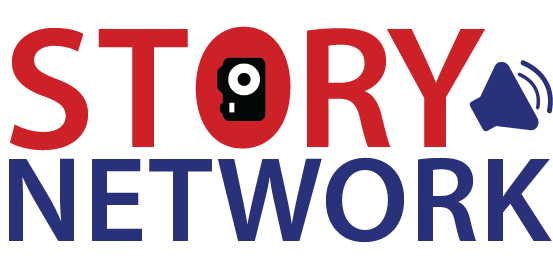Building and nurturing a positive company culture is crucial for the success and growth of any organization. A strong culture creates a sense of belonging, purpose, and shared values among employees, leading to higher levels of engagement, productivity, and satisfaction. This guide explores the importance of company culture and provides ten strategies that leaders and managers can implement to cultivate a positive culture within their organization. By prioritizing these strategies, companies can attract top talent, retain their employees, and achieve long-term business success.
Building a Thriving Organization: 10 Strategies for Cultivating a Positive Company Culture
The Significance of Company Culture
Company culture refers to the shared beliefs, values, norms, and behaviors that define an organization’s identity. It influences how employees interact with one another, how they approach their work, and how they perceive the organization as a whole. A positive company culture creates a supportive and inclusive environment where employees feel valued, motivated, and empowered to contribute their best.
Benefits of a Positive Company Culture
Employee Engagement: A positive culture fosters high levels of employee engagement, where individuals are committed to their work and actively contribute to the organization’s goals.
Increased Productivity: Engaged employees who feel a sense of purpose and belonging are more likely to be productive, leading to improved overall performance.
Talent Attraction and Retention: A positive culture acts as a magnet for top talent, as job seekers are attracted to organizations that prioritize employee well-being and provide a supportive work environment. Moreover, employees are more likely to stay in a company where they feel valued and appreciated.
Enhanced Collaboration: A positive culture promotes collaboration and teamwork, breaking down silos and encouraging the exchange of ideas and knowledge among employees.
Innovation and Adaptability: When employees feel safe to express their ideas and take calculated risks, innovation thrives, enabling organizations to adapt to changing market dynamics and stay ahead of the competition.
Define Your Core Values
Identifying Core Principles and Beliefs: Start by defining the core values that represent the essence of your organization. These values should align with your mission and guide decision-making at all levels.
Communicating and Reinforcing Values: Clearly communicate your core values to employees and integrate them into various aspects of your organization, such as recruitment, performance evaluations, and company policies. Consistently reinforce these values through regular communication and recognition.
Lead by Example
Role Modeling Desired Behaviors: Leaders and managers play a crucial role in shaping the culture of an organization. Act as role models by embodying the values and behaviors you expect from employees.
Demonstrating Ethical and Inclusive Leadership: Display ethical conduct and promote inclusivity by treating all employees with respect and fairness. Foster an environment where diverse perspectives are valued and heard.
Foster Open Communication
Encouraging Transparent and Honest Dialogue: Create a culture of open communication, where employees feel comfortable expressing their opinions, providing feedback, and raising concerns. Encourage active listening and ensure that all voices are heard.
Implementing Effective Communication Channels: Establish effective communication channels, such as regular team meetings, feedback sessions, and anonymous suggestion boxes. Leverage technology to facilitate efficient and inclusive communication, especially in remote or distributed work environments.
Prioritize Employee Well-being
Promoting Work-Life Balance: Support work-life balance by offering flexible work arrangements, encouraging breaks, and setting realistic expectations for workload. Foster a culture that values employee well-being and discourages overwork.
Offering Wellness Programs and Support: Provide wellness programs and resources that promote physical, mental, and emotional well-being. This can include initiatives like employee assistance programs, fitness challenges, and stress management workshops.
Recognize and Reward Achievements
Celebrating Employee Contributions and Milestones: Regularly acknowledge and celebrate employee achievements, both big and small. This can be done through public recognition, personalized messages, or team events.
Implementing a System of Meaningful Recognition: Establish a structured recognition program that aligns with your organization’s values. Recognize employees for demonstrating behaviors that reflect the core values and contribute to the overall success of the organization.
Promote Collaboration and Teamwork
Creating Opportunities for Cross-functional Collaboration: Encourage collaboration across teams and departments by providing opportunities for employees to work together on projects or initiatives. Foster a culture that values cooperation and the exchange of diverse perspectives.
Encouraging Knowledge Sharing and Cooperation: Implement platforms and processes that facilitate knowledge sharing, such as internal communication tools, collaborative spaces, and cross-training programs. Encourage employees to support one another and share their expertise.
Provide Growth and Development Opportunities
Offering Training and Skill Enhancement Programs: Invest in training and development programs that enhance employees’ skills and knowledge. Provide opportunities for both professional and personal growth, aligning with individual career aspirations and organizational needs.
Supporting Career Advancement and Personal Growth: Establish a clear path for career advancement within the organization. Offer mentorship programs, provide challenging assignments, and support employees in pursuing their career goals.
Embrace Diversity and Inclusion
Cultivating a Diverse and Inclusive Workforce: Actively foster diversity and inclusion by promoting equal opportunities for all individuals, regardless of their background or characteristics. Create a culture that values diversity and seeks diverse perspectives.
Ensuring Equal Opportunities and Fair Treatment: Implement inclusive hiring practices, establish policies that prevent discrimination and harassment, and provide training on unconscious bias and cultural sensitivity. Regularly evaluate and address any systemic barriers to inclusivity.
Encourage Innovation and Risk-Taking
Fostering a Culture of Creativity and Experimentation: Create an environment that encourages employees to think creatively and explore new ideas. Promote a mindset that embraces experimentation, learning from failures, and continuous improvement.
Supporting and Rewarding Innovative Ideas: Establish channels for employees to share their innovative ideas and provide mechanisms for evaluating and implementing those ideas. Recognize and reward employees who contribute to innovation and demonstrate a willingness to take calculated risks.
Build Strong Relationships and Trust
Encouraging Positive Interactions and Relationship Building: Foster a culture of collaboration and positive interpersonal relationships. Encourage employees to build connections, both within and across teams, through team-building activities and social events.
Establishing Trust through Transparency and Consistency: Practice transparency in decision-making processes and ensure consistency in the application of policies. Communicate openly about organizational changes, challenges, and successes to build trust and reduce uncertainty.




